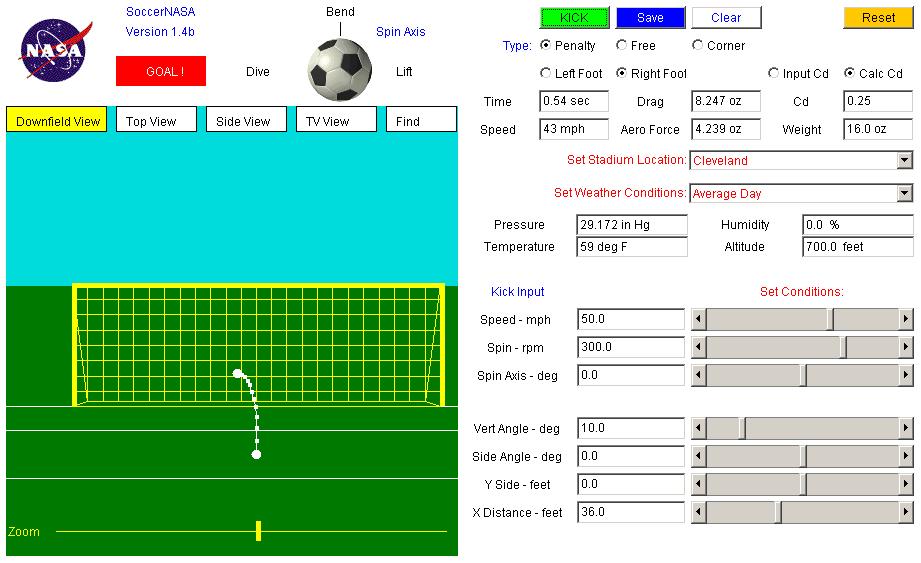
|
Aerodynamics of Soccer
|
Glenn
Research
Center
|
 NASA soccer
NASA soccer
What makes
a soccer ball "bend" in flight?
What determines
how far a kicked ball will travel?
How do weather conditions and stadium location change the flight of a soccer ball?
While NASA
is known for
rocket science
and
airplanes,
we also love to solve more
down-to-earth problems.
Researchers and students both like to play and
watch the world's favorite game, the game of football.
Millions of people from around the world watched the recent World Cup, 2010,
from South Africa.
Americans refer to this game as "soccer" to differentiate it from
the game played with the pointy ball, helmets and shoulder pads.
While the shape of the ball is different,
both games involve the precise movement of a ball through the air,
and both games involve aerodynamics.
To help students better understand the aerodynamics of soccer, NASA researchers have
taken computer applications designed to study and teach the aerodynamics of
airplanes and rockets and applied the equations to soccer.
Aerodynamics is the study
of forces and the resulting motion of objects
as they fly through the air.
Judging from the story of Daedalus and Icarus, humans have
been interested in aerodynamics and flying for thousands of years,
although flying in a heavier-than-air machine
has been possible only in the last hundred years, thanks to the
Wright Brothers.
Aerodynamics affects the motion of every object that moves through the air, including
kites, and
jet engines.
While aerodynamics plays a major role in many sports, such as golf,
baseball,
ski-jumping, and automobile
racing, this web site investigates the effects of aerodynamics on soccer.
With the
SoccerNASA
software you can study how a soccer player
"bends"
the ball and makes it
curve through the air by changing
the values of the factors that affect the aerodynamic forces on the ball.
Factors include the
speed
of the kick, the direction and angle, and the
weather conditions.
These are the same factors that affect the
lift
and
drag
on an aircraft wing.
We add the
spin
of the soccer ball plus
a few mechanics to give you a chance to see how it all comes together.

After you
study soccer from all the angles, you can move on and explore the
aerodynamics of
airplane wings
and
model rockets.
Here is an index of all the web pages related to the aerodynamics of soccer:
SoccerNASA Interactive Simulator
Forces on a Soccer Ball
Ideal Flow Around Spinning Ball ..Interactive**
Ideal Lift on Spinning Ball ..Interactive**
Drag on a Sphere ..Animated**
Lift of a Soccer Ball
Drag on a Soccer Ball
Ballistic Flight ..Interactive**
Flight with Drag ..Interactive**
"Bending" a Soccer Ball
Ballisitic Flight Calculator
Navigation ..

- Beginner's Guide Home Page
|
